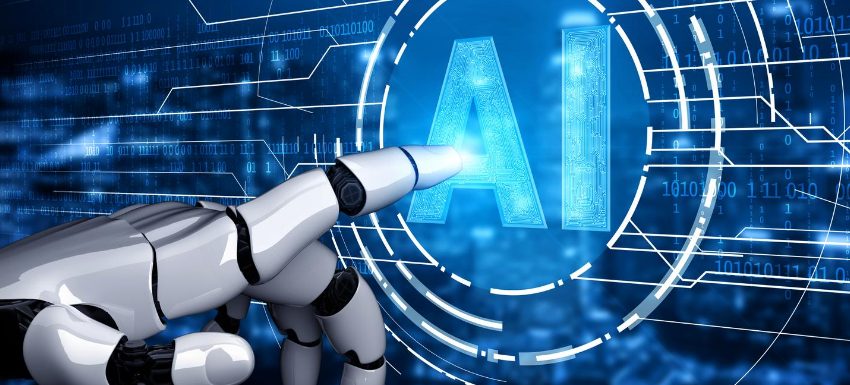In the field of modern artificial intelligence (AI), reinforcement learning (RL) is one of the coolest research topics. AI and machine learning (ML) developers are also focusing on RL practices to improvise intelligent apps or tools they develop.
Machine learning is the principle behind all AI products. Human developers use various ML methodologies to train their intelligent apps, games, etc. ML is a highly diversified field, and different development teams come with novel methods of training a machine.
One such lucrative method of ML is deep reinforcement learning. Here, you punish undesired machine behaviors and reward desired actions from the intelligent machine. Experts consider this method of ML is bound to push the AI to learn from its own experiences.
Continue reading this ultimate guide on reinforcement learning methods for intelligent apps and machines if you are considering a career in artificial intelligence and machine learning.
What Is Reinforcement Learning in Machine Learning?
RL is the teaching of machine learning models to computer programs. Then, the application can make a sequence of decisions based on the learning models. The software learns to reach a goal in a potentially complex and uncertain environment. In this kind of machine learning model, an AI faces a game-like scenario.
The AI app utilizes trial and error to invent a creative solution to the issue at hand. Once the AI app learns proper ML models, it instructs the machine it controls to do some tasks that the programmer wants.
Based on the correct decision and task completion, the AI gets a reward. However, if the AI makes wrong choices, it faces penalties, like losing reward points. The ultimate goal for the AI application is to accumulate the maximum number of reward points to win the game.
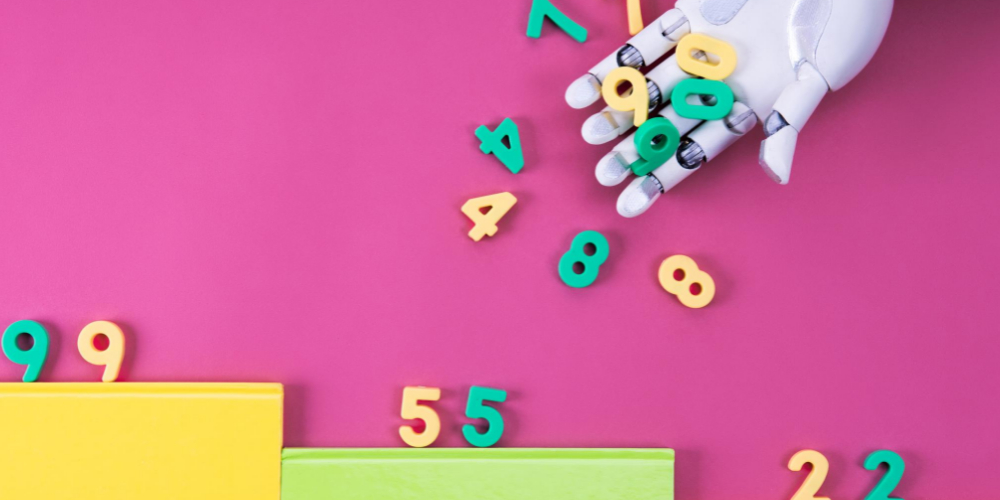
The programmer of the AI app sets the rules of the game or the rewards policy. The programmer also provides the problem that the AI needs to solve. Unlike other ML models, the AI program does not receive any hint from the software programmer.
The AI needs to figure out how to resolve the game challenges to earn maximum rewards. The app can use trial and error, random trials, supercomputer skills, and sophisticated thought process tactics to reach a solution.
You must equip the AI program with powerful computing infrastructure and connect its thinking system with various parallel and historical gameplays. Then, AI can demonstrate critical and high-level creativity that humans can not imagine.
Popular Examples of Reinforcement Learning
#1. Defeating the Best Human Go Player

The AlphaGo AI from DeepMind Technologies, a subsidiary of Google, is one of the leading examples of RL-based machine learning. The AI plays a Chinese board game called Go. It is a 3,000-year-old game that focuses on tactics and strategies.
The programmers used the RL method of teaching for AlphaGo. It played thousands of Go game sessions with humans and itself. Then, in 2016 it defeated the world’s best Go player Lee Se-dol in a one-on-one match.
#2. Real-World Robotics
Humans have been using robotics for a long in production lines where the tasks are pre-planned and repetitive. But, if you need to make a general-purpose robot for the real world where actions are not pre-planned, then it is a great challenge.
But, reinforcement learning-enabled AI could discover a smooth, navigable, and short route between two locations.
#3. Self-Driving Vehicles
Autonomous vehicle researchers widely use the RL method to teach their AIs for:
- Dynamic pathing
- Trajectory optimization
- Movement planning like parking and lane changing
- Optimizing controllers, (electronic control unit) ECUs, (microcontrollers) MCUs, etc.
- Scenario-based learning on freeways
#4. Automated Cooling Systems

RL-based AIs can help minimize the energy consumption of cooling systems in giant office buildings, business centers, shopping malls, and, most importantly, data centers. The AI collects data from thousands of heat sensors.
It also gathers data on human and machinery activities. From these data, the AI can foresee the future heat generation potential and appropriately switches on and off cooling systems to save energy.
How to Set Up a Reinforcement Learning Model
You can set up an RL model based on the following methods:
#1. Policy-based
This approach enables the AI programmer to find the ideal policy for maximum rewards. Here, the programmer does not use the value function. Once you set the policy-based method, the reinforcement learning agent tries to apply the policy so that the actions it performs in each step enable the AI to maximize the reward points.
There are primarily two types of policies:
#1. Deterministic: The policy can produce the same actions at any given state.
#2. Stochastic: The produced actions are determined by the probability of occurrence.
#2. Value-based
The value-based approach, on the contrary, helps the programmer to find the optimal value function, which is the maximum value under a policy at any given state. Once applied, the RL agent expects the long-term return at any one or multiple states under the said policy.
#3. Model-based
In the model-based RL approach, the AI programmer creates a virtual model for the environment. Then, the RL agent moves around the environment and learns from it.
Types of Reinforcement Learning
#1. Positive Reinforcement Learning (PRL)
Positive learning means adding some elements to boost the probability that the expected behavior will happen again. This learning method positively influences the behavior of the RL agent. PRL also improves the strength of certain behaviors of your AI.
PRL type of learning reinforcement should prepare the AI to adapt to changes for a long time. But injecting too much positive learning may lead to an overburden of states that can reduce the AI’s efficiency.
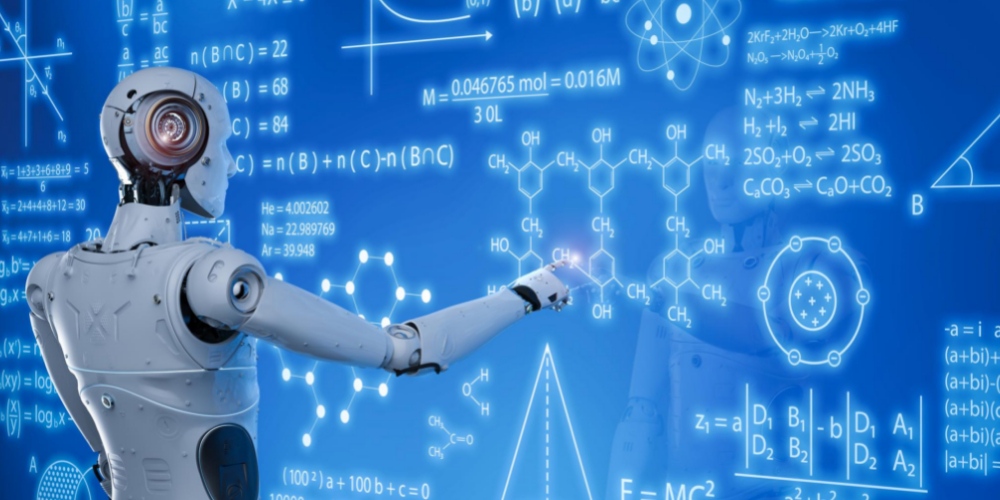
#2. Negative Reinforcement Learning (NRL)
When the RL algorithm helps the AI avoid or stop a negative behavior, it learns from it and improves its future actions. It is known as negative learning. It only provides the AI a limited intelligence just to meet certain behavioral requirements.
Real-Life Use Cases of Reinforcement Learning
#1. eCommerce solutions developers have built personalized product or service suggesting tools. You can connect the tool’s API to your online shopping site. Then, the AI will learn from individual users and suggest custom goods and services.
#2. Open-world video games come with boundless possibilities. However, there is an AI program behind the game program that learns from players’ input and modifies the video game code to adapt to an unknown situation.
#3. AI-based stock trading and investment platforms use the RL model to learn from the movement of stocks and global indices. Accordingly, they formulate a probability model to suggest equities for investment or trading.
#4. Online video libraries like YouTube, Metacafe, Dailymotion, etc., use AI bots trained on the RL model to suggest personalized videos to their users.
Reinforcement Learning Vs. Supervised Learning
Reinforcement learning aims at training the AI agent to make decisions sequentially. In a nutshell, you can consider that the output of the AI depends on the state of the present input. Similarly, the next input to the RL algorithm will depend on the output of the past inputs.

An AI-based robotic machine playing a game of chess against a human chess player is an example of the RL machine learning model.
On the contrary, in supervised learning, the programmer trains the AI agent to make decisions based on the inputs given at the start or any other initial input. Autonomous car driving AIs recognizing environmental objects is an excellent example of supervised learning.
Reinforcement Learning Vs. Unsupervised Learning
So far, you have understood that the RL method pushes the AI agent to learn from machine learning model policies. Mainly, the AI will only make those steps for which it gets maximum reward points. RL helps an AI to improvise itself through trial and error.
On the other hand, in unsupervised learning, the AI programmer introduces the AI software with unlabeled data. Also, the ML instructor does not tell the AI anything about the data structure or what to look for in the data. The algorithm learns various decisions by cataloging its own observations on the given unknown data sets.
Reinforcement Learning Courses
Now that you have learned the basics, here are some online courses to learn advanced reinforcement learning. You also get a certificate that you can showcase on LinkedIn or other social platforms:
Reinforcement Learning Specialization: Coursera
Are you looking to master the core concepts of reinforcement learning with ML context? You can try this Coursera RL course which is available online and comes with self-paced learning and certification option. The course will be suitable for you if you bring the following as background skills:
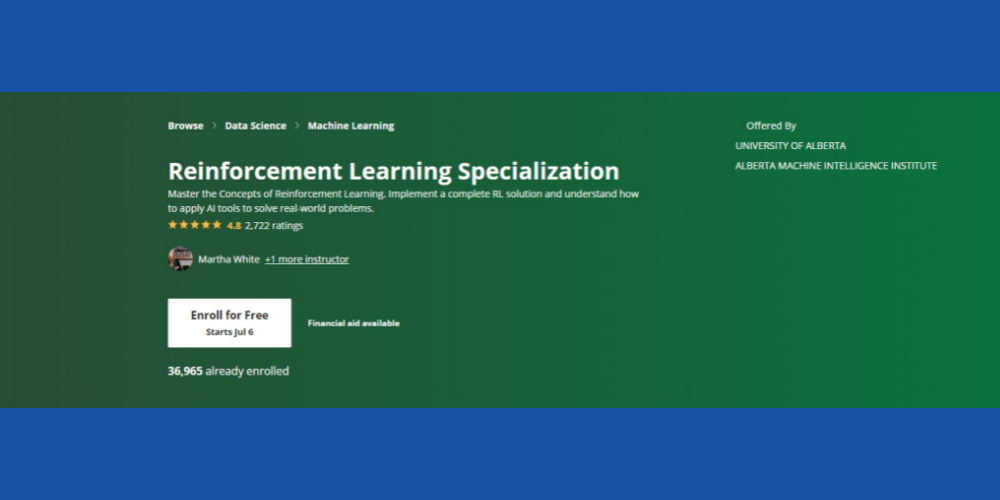
- Programming knowledge in Python
- Basic statistical concepts
- You can convert pseudocodes and algorithms into Python codes
- Software development experience of two to three years
- Second-year undergraduates in computer science discipline are also eligible
The course has a 4.8-star rating, and over 36K students have already enrolled in the course in different courses of time. Furthermore, the course comes with financial aid provided that the candidate meets certain eligibility criteria of Coursera.
Finally, the Alberta Machine Intelligence Institute of the University of Alberta is offering this course (no credit awarded). Esteemed professors in the field of computer science will function as your course instructors. You will earn a Coursera certificate upon completion of the course.
AI Reinforcement Learning in Python: Udemy
If you are into the financial market or digital marketing and want to develop intelligent software packages for the said fields, you must check out this Udemy course on RL. Apart from the core principles of RL, the training content will also coach you on how to develop RL solutions for online advertising and stock trading.
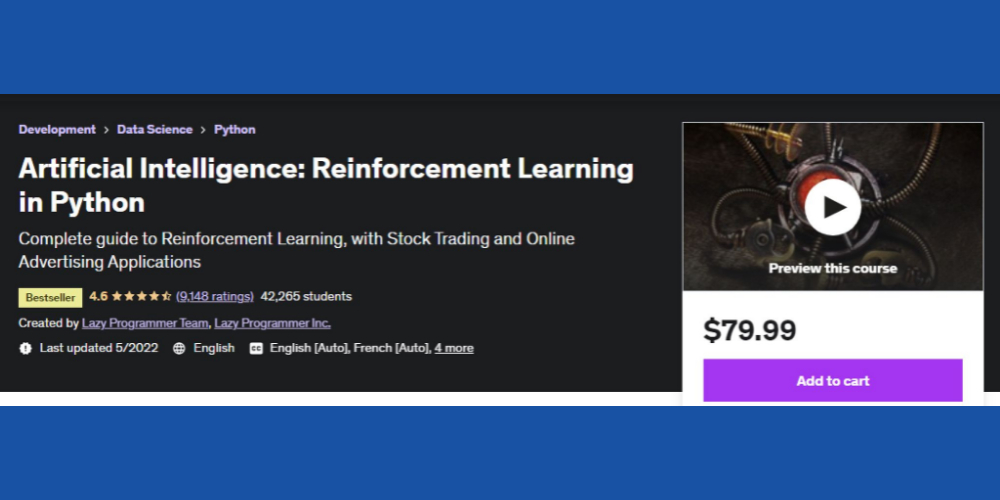
Some notable topics that the course cover are:
- A high-level overview of RL
- Dynamic Programming
- Monet Carlo
- Approximation Methods
- Stock trading project with RL
Over 42K students have attended the course so far. The online learning resource currently holds a 4.6-star rating, which is pretty impressive. Moreover, the course aims at catering to a global student community since the learning content is available in French, English, Spanish, German, Italian, and Portuguese.
Deep Reinforcement Learning in Python: Udemy
If you have curiosity and basic knowledge of deep learning and artificial intelligence, you can try this advanced RL course in Python from Udemy. With a 4.6-star rating from students, it is yet another popular course to learn RL in the context of AI/ML.
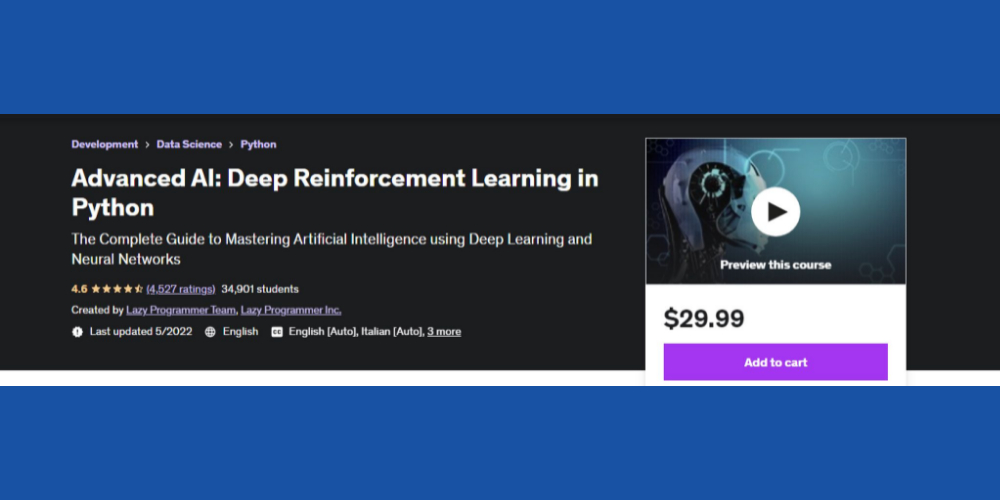
The course has 12 sections and covers the following vital topics:
- OpenAI Gym and basic RL techniques
- TD Lambda
- A3C
- Theano Basics
- Tensorflow Basics
- Python coding for starters
The entire course will require a committed investment of 10 hours and 40 minutes. Apart from texts, it also comes with 79 expert lecture sessions.
Deep Reinforcement Learning Expert: Udacity
Want to learn advanced machine learning from the world leaders in AI/ML like Nvidia Deep Learning Institute and Unity? Udacity lets you fulfill your dream. Check out this Deep Reinforcement Learning course to become an ML expert.
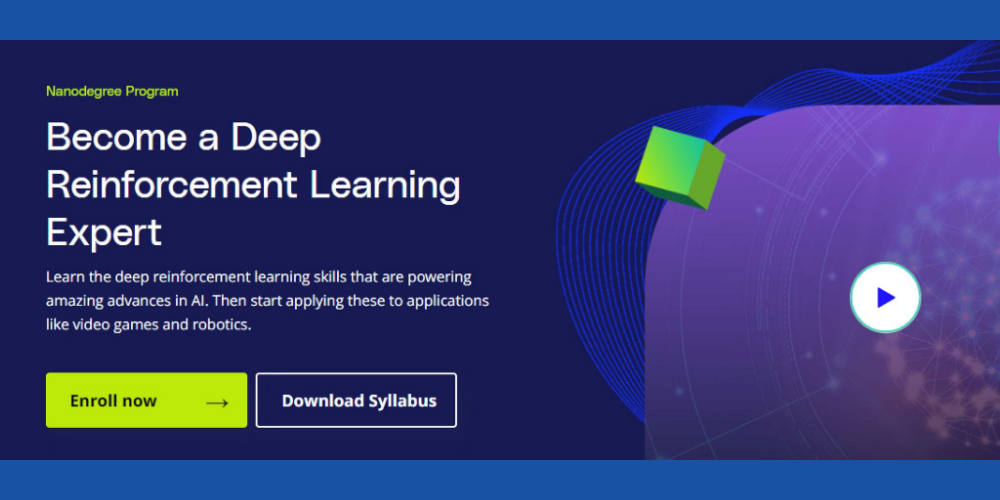
However, you need to come from a background of advanced Python, intermediate statistics, probability theory, TensorFlow, PyTorch, and Keras.
It will take diligent learning of up to 4 months to complete the course. Throughout the course, you will learn vital RL algorithms like Deep Deterministic Policy Gradients (DDPG), Deep Q-Networks (DQN), etc.
Final Words
Reinforcement learning is the next step in AI development. AI development agencies and IT companies are pouring in investments in this sector to create reliable and trusted AI training methodologies.
Though RL has advanced a lot, there are more scopes of development. For example, separate RL agents do not share knowledge between them. Therefore, if you are training an app to drive a car, the learning process will become slow. Because RL agents like object detection, road references, etc., will not share data.
There are opportunities to invest your creativity and ML expertise in such challenges. Signing up for online courses will help you to further your knowledge of advanced RL methods and their applications in real-world projects.
Another related learning for you is the differences between AI, Machine Learning, and Deep Learning.
Si quiere puede hacernos una donación por el trabajo que hacemos, lo apreciaremos mucho.
Direcciones de Billetera:
- BTC: 14xsuQRtT3Abek4zgDWZxJXs9VRdwxyPUS
- USDT: TQmV9FyrcpeaZMro3M1yeEHnNjv7xKZDNe
- BNB: 0x2fdb9034507b6d505d351a6f59d877040d0edb0f
- DOGE: D5SZesmFQGYVkE5trYYLF8hNPBgXgYcmrx
También puede seguirnos en nuestras Redes sociales para mantenerse al tanto de los últimos post de la web:
- Telegram
Disclaimer: En Cryptoshitcompra.com no nos hacemos responsables de ninguna inversión de ningún visitante, nosotros simplemente damos información sobre Tokens, juegos NFT y criptomonedas, no recomendamos inversiones

